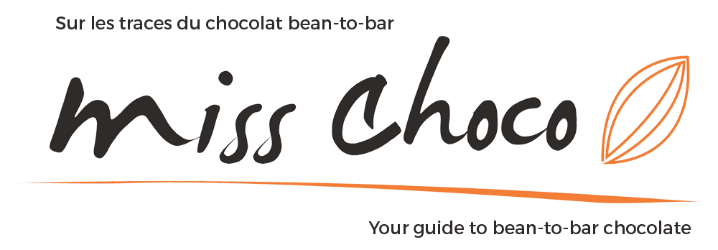On January the 20th, I was invited to participate on a panel called “How can women transform the food industry for women?” during the International Forum. This forum was organized by CECI and WUSC-EUMC, the two organizations with which I was able to go to Peru in July 2016. In the weeks previous to this forum, I dug deeper into the topic of women’s conditions in cacao and chocolate production. There are many inequalities, but things are changing little by little, and numerous initiatives appeared in the last few years to help women and add value to their work.
The situation
According to statistics from the World Cocoa Foundation, in agriculture in general, « Women perform 66 % of the world’s work, produce 50% of the food, but only manage 10% of the income and only own 1% of the property » (World Cocoa Foundation). The situation is similar in cacao production. In West Africa, between 15% and 25% of women working in a cacao field own the land (UTZ Certified and Solidaridad, 2009). The others are spouses of cacao farmers, family members or employees. Access to land is one of the major barriers for female producers, and other obstacles result from it: access to cooperatives, credit, training and market (1).
Percentage of land ownership in West Africa. Source: CLP survey; Empowering Women and Fighting Poverty: Cocoa and Land Rights in West Africa: International Food and Policy Research Institute; Dalberg analysis.
Oftentimes, the work of those women is less recognized, and they get lower salaries than men. However, they participate in 50% of the tasks related to the cultivation of cacao, and as much as 70% in some countries like in Ghana (Andoh, 2017). Also, most of the time, the tasks they complete are essential to the quality of the cacao beans. They are the ones taking care of the young cacao trees in the nursery, or in charge of the post-harvest processes: fermentation, drying, sorting of the bean (The Gender and Cocoa Livelihoods Toolbox). These steps are crucial to getting a high quality cacao. That’s indeed what I observed during my trip to Madagascar in the Fall of 2016.
Pod breaking, MAVA Plantation (Madagascar)
Drying cacao beans, Plantation Millot (Madagascar)
Sorting cacao beans, MAVA Plantation (Madagascar)
The situation of the female bean-to-bar (b2b) chocolate makers is different. Since I started in the industry in 2008, the number of female b2b makers has largely increased. In Canada only, there are about thirty b2b makers right now and more than half of them are run by women alone or couples where the woman has a very influential role in the production. The weight of the cacao bags or the very mechanical and technical side of the production don’t seem to stop them (2).
Most of the female b2b makers I talked to told me that their biggest challenge as women was to get cacao beans directly from farmers. Unfortunately, some of them are not taken seriously when they do business with male producers, wether they are based in Canada, in the USA or in a cacao producing country (3). Several of them would like to work with female cacao producers, but they don’t always know how to reach them or the cooperatives in which they are members.
Positive initiatives
One of the solutions is to help women from all spheres of the chocolate industry connect by giving them the possibility to meet and forge links. Since May 2016, those connections are possible thanks to the Women in Cocoa and Chocolate Network (WINCC). Helping women to create relationships between those who cultivate cacao, transform it, sell the final products and those who offer education is very important. And I think it’s the key for things to continue improving.
However, positives initiatives are plentiful and we should talk more about them. In many cacao producing countries, women cooperatives or cooperatives run by women are put in place. I’m thinking, among others, about the Cooperative des femmes entrepreneurs de Côte d’Ivoire (COFENCI) or Kuapa Kokoo in Ghana. More than a third of the members of this cooperative are women, and they are represented on all the committees. In Peru, the Cooperativa Agraria Cafetalera Pangoa, that cultivates coffee and cacao, has a women as general manager, Esperanza Dionisio Castillo, and she is respected by all.
Esperanza Dionisio Castillo, General Manager of C.A.C. Pangoa
Those are only some examples of positive initiatives by and for women in the cacao and chocolate industry. Women in cacao producing countries have more and more opportunities to cultivate and sell their cacao, but they need to have access to market. A well, more and more b2b female chocolate makers are seeking the female producers because they would like to work with them. Not only because they are women, but also because of their high quality cacao!
NOTES
1. For further details on the barriers women face in the production of cacao, read the thorough report from UTZ Certified and Solidaridad (2009).
2. However, some select their machines accordingly, buying those that are lighter or easier to move. (Palette de Bine, personal communication).
3. Personal communication with Q’UMA Chocolate, QANTU, Palette de Bine.
BIBLIOGRAPHIE
Andoh, D. (January 12th 2107). « Female cocoa farmer groups receive support to improve yields », Graphic Online. En ligne: http://www.graphic.com.gh/news/general-news/female-cocoa-farmer-groups-receive-support-to-improve-yields.html.
Barrientos, S. (2013). « Gender production networks: Sustaining cocoa-chocolate sourcing in Ghana and India », Brooks World Poverty Institute (no. 186). Manchester.
Barometer Consortium (2015). Cocoa Barometer 2015. Online: http://www.cocoabarometer.org/Home.html
International Food Policy Research Institute. (2002). Empowering Women and Fighting Poverty: Cocoa and Land Rights in
West Africa: International Food and Policy Research Institute; Dalberg analysis.
Oxfam. https://www.oxfam.org/sites/www.oxfam.org/files/gender-inequality-cocoa-ivory-coast.pdf.
The Gender and Cocoa Livelihoods Toolbox, http://genderandcocoalivelihoods.org/
UTZ Certified and Solidaridad. (2009). The role of certification and producer support in promoting gender equality in cocoa production. Online: https://utzcertified.org/attachments/article/92/CocoaGenderUTZSolidaridad_2009.pdf.
World Cocoa Foundation. Online: http://www.worldcocoafoundation.org/wp-content/uploads/files_mf/womenincocoafarming_presentations.pdf
 Online Store Close For Summer
Online Store Close For Summer Wholesale
Wholesale